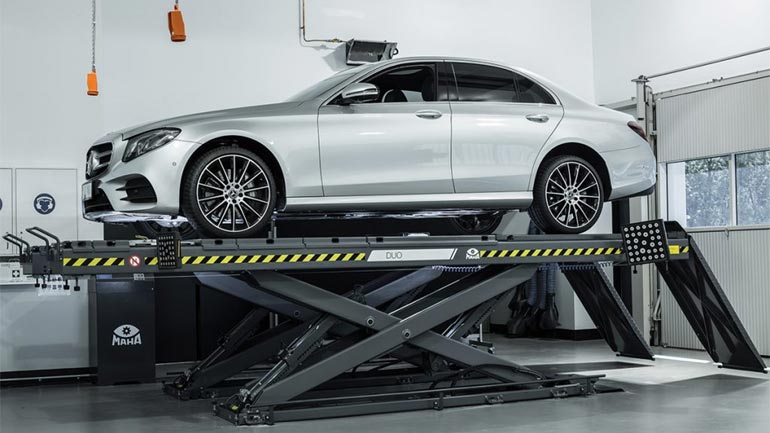
Today, LED headlights are found in many cars, the reason being their noticeably more flexible shape and many other advantages as well. This doesn’t apply to older machines though. Nonetheless, even if the automaker does not offer LED headlights, conversion kits are often available that can be installed even without much experience. We tell you what to pay attention to during installation and what advantages new lights have, in addition, you will find tips on buying LED headlights.
Why replace the lights?
Light Emitting Diode (LED) lights have many advantages over their predecessors, traditional bulbs, but also over their immediate competitors, xenon headlights. The benefits both for you and for other drivers. LED lights last for tens of thousands of operating hours. Oncoming traffic drivers in particular will be grateful to you for using the LED lights. By spreading the light with the different sources, the LED headlights have a very low glare effect. Even if the high beams come on by mistake, this can hardly bother other drivers.
Multibeam LED (Mercedes-Benz) and Matrix LED (Audi) go one step further. These very special LED headlights represent a technological evolution of traditional LED headlights. 36-module LEDs are controlled by the computer, they receive data from the small camera that give the possibility to recognize roundabouts and automatically adapt the switching on and off of the high beams in case of traffic from the opposite direction. These systems are currently only available in luxury versions. However, it is likely that in the next few years we will also have the opportunity to find conversion kits.
The drawback, in this case, is the high price. Even considering the long life, LED lights are always more expensive than H3 halogen bulbs and also compared to xenon ones. LED lamps produce significantly less residual heat. On the one hand, it is an advantage, even if it could create problems. The humidity that could form inside the lighthouse does not evaporate very quickly. This problem can only be avoided with correct sealing. Some people notice the presence of condensation inside the PWM LED headlights, caused by the response time of the lamps so slow, that the pulsating frequencies turn on and off in a very rapid sequence. This is annoying, even if the effect is neutralized with the technical measures adopted by the car manufacturers.
Legal provisions to consider when purchasing
Headlights are the important components of safety and are not only used at night. The ECE regulations in this regard are very strict. Basically, the car is divided into three “zones” – front, side, and rear. As for the colors, the following regulations apply:
Front direction:
- Front LED headlights- With the exception of the beacons and fog lights, all lights must be white.
- As a minimum, the following are mandatory: The main and dipped beam headlights, the
parking lights, the reflex reflector, and the reversing light.
The following are optional: sidelights, daytime running lights, and fog lights.
Lateral direction:
- Side LED headlights- All lights must be yellow or
- As a minimum, the following are mandatory: direction indicators, warning direction indicator.
The following are optional: sidelight and reflectors.
Rear direction:
The rear LED headlights- Depending on the type, different lights are used
- As an obligation, the reverse light must be
- As a requirement, the indicator must be yellow /
- How must the rear lights, brake lights, and parking lights be
- Optional: rear fog lights (red) and reflectors (red).
Regarding the luminous efficacy regulation, the values for LED lights are not specified. The H1 bulb can reach a maximum of 1150 lumens, while the H8 bulb can have around 800 lumens. However, it is important that the dipped and main beam headlights generate sufficient light. The intensity of the low beam is less important than that of the xenon lights, for example.
Fog lights are now even cheaper you can create your own design for the LED headlights, an opposite housing, and install them in your own car. It is only necessary to pass the car inspection to check if the installation is carried out in compliance with the regulations. The same applies to commercially purchased and possibly installed LED lights. The exception, in this case, is certification, which ensures that the component in combination with the vehicle complies with all regulations and standards.
ECE certification, often known as E-certificate, as well as regulations, originate from the European Commission. It can be recognized by the symbol E in a circle or in a square printed on the label. Often the additional number indicates the country where the certification was carried out. This symbol ensures that you do not risk losing your permission to drive the vehicle after installing the LED headlights. Further technical review is not necessary.
Conversion – this is usually quite easy
There are generally two ways to get LED headlights: with the so-called conversion kit or with the help of LED retrofit headlights. In the first version the headlights are completely replaced, the housing included. This is usually not a problem and only takes an hour for each part, including disassembly. The devil is in the details because it is very important that the headlights are well sealed to prevent the penetration of rainwater. Also, the wiring must be checked.
LED lights have pulsed rectified current. Especially in old cars, the electricity supply is not compatible with LED bulbs and adapters or transformers must be installed. Generally, during the purchase, you can find information about it by reading the product description. If it is just an upgrade when the LED headlights are already theoretically available, but still not adapted for the specific model, the technology is already there and you just have to replace the housing and socket.




